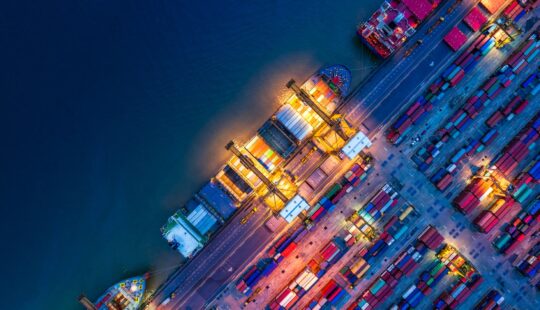What’s News
Supply chains for consumer goods are finally showing signs of stabilization following a rollercoaster 18 months. This trend could be reinforced by China’s decision to moderate its zero-COVID policy that led to repeated shutdowns during the pandemic.
SAP’s Take
“With the holiday season in full flow, it is great to see some positive news come out of the supply chain,” said Richard Howells, a supply chain expert at SAP. Howells also noted that Black Friday and Cyber Monday shopping hit records.
According to the latest figures from Adobe Analytics, consumers spent $116.5 billion in e-commerce sales over the long Black Friday and Cyber Monday weekend – a 1.7% increase from last year. That increase came despite a push from retailers for consumers to do even more of their holiday shopping ahead of Halloween.
Along with other good news for U.S. consumers (and manufacturers), the threat of a rail strike receded after the Senate voted to impose a tentative labor deal – helping to save the holidays from supply chain mayhem.
In addition, recent numbers from the marine transport industry showed that there were zero container ships waiting offshore of the ports of Long Beach and Los Angeles prior to Thanksgiving: “The first time this has happened since October of 2020,” Howells said.
Congestion in the East and Gulf Coast ports has also gradually eased over recent months. New York, New Jersey and Houston in particular have significantly reduced ship backlogs.
The easing of China’s zero-COVID policy following an unprecedented wave of protests should also help stabilize supply chains with fewer factory shutdowns and disruptions.
Meanwhile, a recent release from the Bureau of Economic Analysis shows that inflation-adjusted consumer spending jumped 0.5% in October compared with September, the largest such increase since January. That’s welcome news for retailers that held a slew of promotions that month and reflects consumers’ eagerness to start holiday shopping far earlier than usual.
But it’s not all good news. Preliminary data from Adobe Analytics also suggests much weaker post-Thanksgiving spending than in previous years. Even if 2022 shakes out to be a banner year for holiday shopping, there is still the question of whether consumers will be able to afford their new purchases.
The surge in early holiday shopping could yet turn to boon the reverse logistics industry if consumers end up returning purchases in late December and early January that they realize they cannot afford.
Contact:
Ilaina Jonas, Senior Director of Global Public Relations, SAP
+1 (646) 923-2834, ilaina.jonas@sap.com



